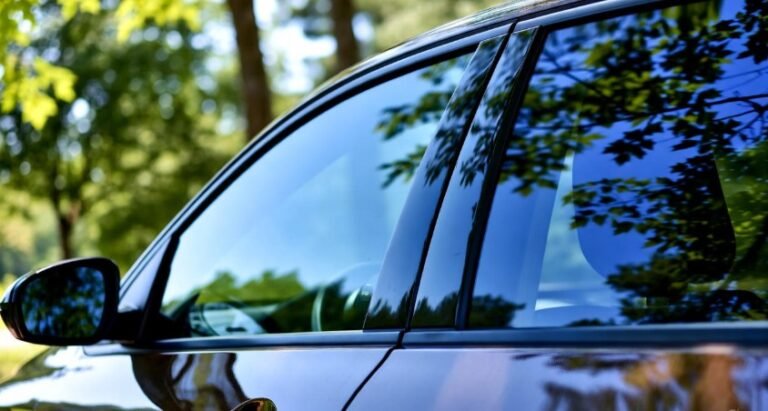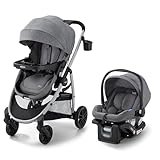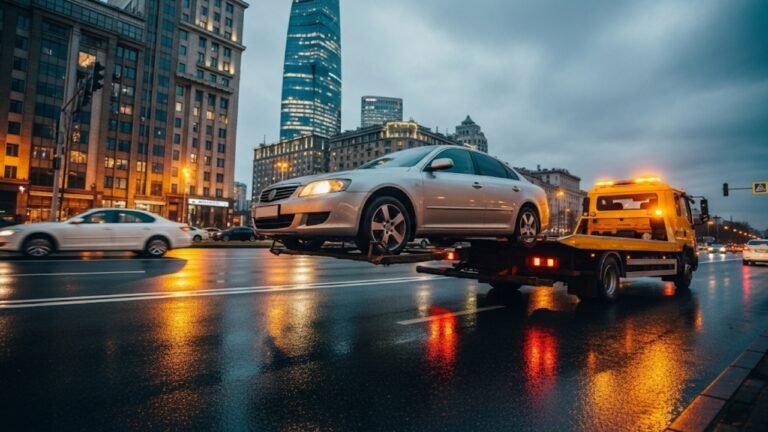How to Set Cruise Control in Nissan Rogue: Mastering the Essential Feature

Have you ever been on a long highway drive and wished your car could just maintain speed for you? That’s exactly what cruise control in the Nissan Rogue does. It’s one of those simple yet powerful features that can turn a tiring road trip into a relaxing cruise. Whether you’re heading out on a weekend adventure or commuting daily through long stretches of open roads, understanding how to set cruise control in your Nissan Rogue can make your drives smoother, safer, and far more enjoyable.
I still remember my first time using cruise control in a Rogue on a long drive to the countryside. The hum of the engine was steady, the road stretched endlessly ahead, and I could finally relax my foot after hours of pressing the accelerator. It was like the car understood my rhythm and took over the effort for me.
In this article, you’ll learn not only how to activate, set, and adjust the cruise control but also how to use it safely, troubleshoot issues, and make the most of this smart driving feature. Let’s begin by understanding the basics before diving into practical steps and pro tips.
In This Article
- 1 Understanding the Cruise Control System in the Nissan Rogue
- 2 Preparing Your Nissan Rogue for Cruise Control
- 3 Getting Started: Activating Cruise Control in a Nissan Rogue
- 4 Setting and Adjusting Your Desired Speed
- 5 Adjusting Controls Smoothly While Driving
- 6 Monitoring Road Conditions and Staying Aware
- 7 Reacting to Traffic Changes While Using Cruise Control
- 8 Mastery for Long Drives: Making Cruise Control Your Friend
- 9 Troubleshooting Common Cruise Control Issues
- 10 Tips for Safe Cruise Control Usage
- 11 Conclusion: Embrace the Convenience of Cruise Control
- 12 FAQs About Cruise Control in Nissan Rogue
Understanding the Cruise Control System in the Nissan Rogue
Before pressing any buttons, it’s important to know how cruise control works. In simple terms, cruise control is a system that lets your vehicle maintain a constant speed without keeping your foot on the accelerator. Think of it as a helpful assistant—steady, consistent, and reliable.
In the Nissan Rogue, the cruise control system is intuitive and designed for ease of use. Once activated, it takes control of the throttle, maintaining your chosen speed until you intervene by braking, accelerating, or turning it off.
Here’s why it matters:
-
It reduces driver fatigue, especially on long highway journeys.
-
It helps maintain fuel efficiency, as steady speeds use less gas than frequent acceleration and braking.
-
It promotes a more comfortable and focused drive, allowing you to pay more attention to the road.
Modern versions of the Rogue even come with Intelligent Cruise Control, which uses radar sensors to monitor the distance from the car ahead and automatically adjusts speed. This feature adds another layer of safety and convenience, particularly in traffic.
So, before you start using it, remember this — cruise control isn’t just a luxury. It’s a feature designed to make you a calmer, more efficient driver.
Preparing Your Nissan Rogue for Cruise Control
Like any other system in your car, cruise control works best when your vehicle is ready for it. Think of it as setting up for a comfortable trip — you wouldn’t leave without checking your bag, right?
Here’s what to do before activating cruise control:
-
Check Your Brakes – Since pressing the brake pedal deactivates cruise control, ensure your brakes are responsive and in good condition.
-
Inspect Tires and Air Pressure – Uneven tires or low pressure can affect stability, especially at constant speeds.
-
Monitor Engine Health – Make sure your fluids — oil, coolant, and transmission — are at proper levels.
-
Find the Right Road Conditions – Cruise control is meant for open highways, not city traffic or slippery roads. Avoid using it on wet, icy, or winding roads.
Once everything looks good, you’re ready to experience the smooth operation that Nissan’s cruise control system offers. Preparing beforehand ensures your safety and allows you to fully enjoy the feature without interruptions.
Getting Started: Activating Cruise Control in a Nissan Rogue
Now let’s move to the fun part — actually turning on cruise control. Don’t worry; it’s easier than it sounds. Nissan has designed the system to be beginner-friendly, so once you’ve done it a couple of times, it’ll feel like second nature.
Here’s the simple step-by-step process:
-
Start your Nissan Rogue and get on an open road where you can maintain a consistent speed.
-
Locate the cruise control buttons on the right side of your steering wheel.
-
Press the “ON/OFF” switch to activate the cruise control system. You’ll usually see a small indicator light appear on your dashboard.
-
Accelerate to your desired speed manually using the gas pedal.
-
Once you reach the speed you want to maintain, press the “SET–” button. This locks in the speed, and the system takes over from there.
That’s it! Your Nissan Rogue is now maintaining speed automatically. You can release your foot from the accelerator and enjoy a more relaxed drive.
Here’s a quick example:
Imagine you’re driving at 65 mph on the highway. You press “ON,” then “SET–.” The car will now continue at exactly 65 mph — no need to press the gas pedal again.
Just remember, if you step on the brakes, press the “CANCEL” button, or turn the system off, cruise control will disengage immediately.
Setting and Adjusting Your Desired Speed
Once you’ve activated cruise control, the next step is fine-tuning your speed. Sometimes traffic flows a bit faster or slower, and you’ll want to make small adjustments without deactivating the system.
Here’s how to do it:
-
To Increase Speed: Tap the “RES/+” button. Each press increases your speed slightly (usually by 1 mph).
-
To Decrease Speed: Press the “SET–” button to slow down gradually.
-
To Temporarily Deactivate: Lightly tap the brake or clutch (if applicable). The system pauses but remembers your last set speed.
-
To Resume: Press “RES/+” again to return to your previous speed setting.
One great thing about the Nissan Rogue’s cruise control is how responsive it is. Even a quick tap gives you precise control over your speed — ideal for maintaining smooth flow with surrounding traffic.
Here’s a useful tip:
If you’re driving uphill or downhill, remember that cruise control tries to maintain your set speed. On steep slopes, it might accelerate more than expected or slow down slightly. Always stay alert and ready to adjust if needed.
This balance between automation and awareness is what makes cruise control truly effective and safe.
Adjusting Controls Smoothly While Driving
Adjusting your cruise control isn’t just about speed — it’s about control and comfort. The Rogue’s system allows for effortless, fingertip adjustments. Think of it as tuning a radio — you want just the right frequency.
Here’s what you should know about adjusting controls effectively:
-
Increasing Speed Gradually: Instead of flooring the gas pedal, tap the “RES/+” button until you reach your preferred speed. This keeps your driving smooth and fuel-efficient.
-
Decreasing Speed: Use the “SET–” button to slow down gently, avoiding sudden jerks that can disrupt your comfort or affect the car behind you.
-
Canceling Cruise Control: If you need to regain manual control, press “CANCEL” or lightly touch the brake pedal. It’s an instant disengage — handy for sudden traffic changes.
-
Turning Off the System Completely: Once you’re done using it, press the “ON/OFF” switch again. This ensures that the feature doesn’t remain active accidentally.
Pro Tip: On newer Rogue models, if you have Intelligent Cruise Control, you can even adjust the distance between your car and the one ahead. This adaptive system automatically speeds up or slows down to maintain a safe gap — a lifesaver in varying traffic conditions.
Smooth adjustments are the key to making cruise control feel natural rather than mechanical. Once you get used to it, it feels almost like the car reads your mind.
Monitoring Road Conditions and Staying Aware
Cruise control may make driving easier, but it doesn’t mean you can zone out. In fact, using it effectively means staying more aware of your surroundings.
When your car maintains a steady speed, it’s easy to slip into relaxation mode — but remember, cruise control isn’t autopilot. You’re still the one in charge.
Here’s how to stay alert while cruising:
-
Keep scanning the road ahead for slow-moving vehicles, curves, or construction zones.
-
Adapt to traffic flow — deactivate cruise control if you notice congestion or erratic driving from others.
-
Be cautious on wet or icy roads, as traction control might interfere with cruise control, leading to unexpected speed changes.
-
Stay hands-on — even though your foot can rest, your hands and eyes should always be fully engaged.
Using cruise control in your Nissan Rogue should feel like a partnership. The system handles the monotony of speed control, while you focus on the bigger picture — the road, traffic, and changing conditions.
This collaboration between technology and driver awareness is what ensures every trip is safe, smooth, and enjoyable.
Reacting to Traffic Changes While Using Cruise Control
One of the most important skills when using cruise control in a Nissan Rogue is knowing how to respond to traffic variations. While the system maintains speed efficiently, it doesn’t replace human judgment. Traffic conditions can change suddenly — a car might cut in, or a slowdown might appear unexpectedly.
To react safely:
-
Disengage Cruise Control Quickly: The easiest way is to tap the brake. This immediately hands control back to you, allowing for quick acceleration or deceleration.
-
Use the Cancel Button: If you anticipate needing manual control shortly, pressing “CANCEL” suspends cruise control without erasing your set speed. This is useful when approaching traffic lights or congested zones.
-
Adjust Speed Proactively: In moderately heavy traffic, slightly reducing your speed with the “SET–” button can prevent sudden braking. Similarly, use “RES/+” when the flow clears to return to your previous cruising pace.
Think of cruise control like a co-pilot — it can help, but you’re still steering the plane. By staying vigilant, you ensure safety without losing the convenience of automated speed control.
Mastery for Long Drives: Making Cruise Control Your Friend
If you spend hours on the highway, cruise control in the Nissan Rogue can transform your driving experience. Long drives no longer mean aching feet or constant speed adjustments. Once you understand the controls, it becomes a seamless extension of your driving routine.
Here’s how to master it for extended trips:
-
Activate Early, Adjust Gradually: When you hit the highway, turn on cruise control and gradually set your preferred speed. This avoids sudden acceleration that can reduce comfort.
-
Use Adaptive Features if Available: For Rogue models with Intelligent Cruise Control, you can set a preferred following distance. This feature automatically adjusts speed in traffic, reducing stress.
-
Combine with Steering Awareness: Even with cruise control, minor steering adjustments may be needed, particularly around curves or when lanes narrow. Think of it as a collaboration — your hands guide, and the system maintains speed.
-
Mind Inclines and Declines: On steep hills, cruise control may increase engine load or reduce speed. Use manual acceleration for safety, then resume cruise control when the terrain stabilizes.
The more you use it, the more natural it feels. Many drivers notice improved focus and reduced fatigue, especially on cross-country drives. Cruise control isn’t just a convenience — it’s a strategy for comfortable, stress-free driving.
Troubleshooting Common Cruise Control Issues
Even the most reliable systems occasionally run into problems. If you encounter difficulties with cruise control in your Nissan Rogue, here’s a practical guide to troubleshooting:
-
Unresponsive Buttons: Ensure the system is turned on and the car is at a speed that allows cruise control activation. Most systems require at least 25–30 mph to engage.
-
Fuse Check: Inspect the cruise control fuse in the vehicle’s fuse box. A blown fuse can completely disable the system.
-
Brake Pedal Sensor: If the brake pedal sensor is faulty or stuck, it may prevent cruise control from activating.
-
Electronic Module Errors: Some issues can be detected by the vehicle’s onboard computer. Check for error codes and address them promptly.
-
Consult a Professional: If none of these steps resolve the problem, a certified Nissan technician can inspect and repair the system safely.
Regular maintenance and periodic inspection of the cruise control system can help avoid unexpected issues. Treat it like any other vehicle component — attention now prevents frustration later.
Tips for Safe Cruise Control Usage
Using cruise control effectively is as much about safety as convenience. Here are some tips to maximize benefits without compromising control:
-
Avoid using cruise control in heavy traffic, city streets, or sharp curves.
-
Stay alert to changing road conditions, even on highways.
-
Combine cruise control with lane awareness; do not let automation replace vigilance.
-
Use adaptive features to maintain safe distances in variable traffic.
-
Pause cruise control during rain, snow, or icy conditions to ensure maximum vehicle stability.
By respecting these guidelines, you can rely on cruise control as a partner, not a replacement for driving judgment.
Conclusion: Embrace the Convenience of Cruise Control
Learning how to set cruise control in a Nissan Rogue is more than a technical skill; it’s a game-changer for anyone who spends time behind the wheel. From long stretches of highway to daily commuting, this feature reduces fatigue, improves fuel efficiency, and makes driving more enjoyable.
By following the steps outlined above — activating the system, setting your speed, adjusting controls, and monitoring traffic — you’ll gain confidence in using cruise control safely. Treat it as a helper, not a replacement, and your Rogue will reward you with smoother, stress-free drives.
Think of cruise control as a gentle assistant. It frees you to enjoy the journey, observe the scenery, and focus on the things that matter — safe, efficient, and comfortable driving.
FAQs About Cruise Control in Nissan Rogue
1. Can cruise control be used in city traffic?
No. Cruise control is designed for open roads. Using it in city traffic is unsafe due to frequent stops and starts.
2. Will cruise control work in rain or snow?
It can, but it’s not recommended. Slippery conditions can affect stability and braking, so manual control is safer.
3. How do I temporarily pause cruise control?
Tap the brake or press the “CANCEL” button. The system remembers your previous speed for easy resumption.
4. What speed is required to activate cruise control?
Most Nissan Rogue models require a minimum speed of around 25–30 mph for activation.
5. Can cruise control improve fuel efficiency?
Yes. Maintaining a consistent speed reduces unnecessary acceleration and braking, saving fuel on long drives.
6. What should I do if cruise control stops working?
Check the system’s ON/OFF switch, inspect fuses, and consult a certified Nissan technician if needed.
7. Is Intelligent Cruise Control different from regular cruise control?
Yes. Intelligent Cruise Control uses radar to maintain a safe distance from the vehicle ahead, adjusting speed automatically.
8. Can I use cruise control on steep hills?
It’s possible, but monitor your speed closely. On steep inclines or declines, manual adjustments are safer.






